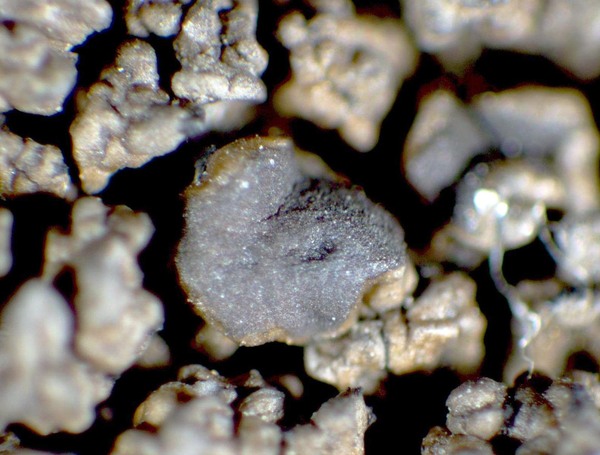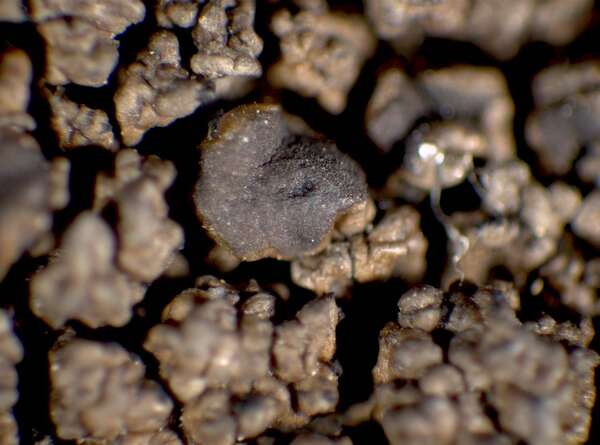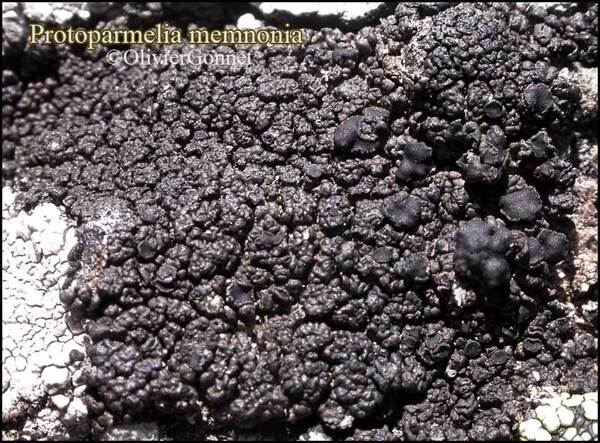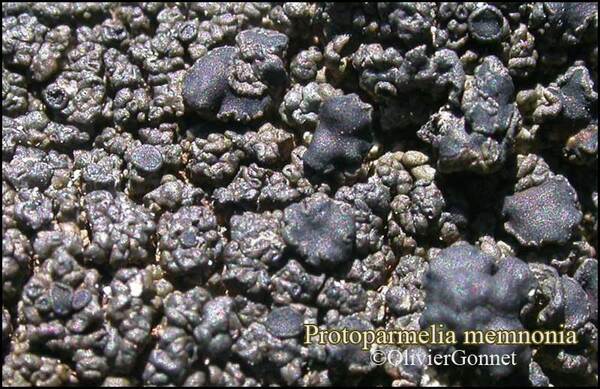Protoparmelia memnonia Hafellner & Türk
Stapfia, 76: 157, 2001.
Synonyms: Lecanora picea auct. non (Dicks.) Nyl.; Protoparmelia picea auct. non (Dicks.) Hafellner
Distribution: N - Piem (Isocrono & al. 2004, Isocrono & Piervittori 2008), VA (Piervittori & Isocrono 1997, 1999, Piervittori & al. 2004).
Description: Thallus crustose, episubstratic, rimose-areolate to warted, brown-black to black, forming large patches, rarely delimited by a thin, black prothallus. Areoles mostly contiguous, irregular in shape, usually convex, with a folded- uneven surface, epruinose, more or less glossy. Cortex with a brown upper layer overlain by an epinecral layer; medulla white or pale yellowish, I-. Apothecia lecanorine, usually not very abundant, at first immersed to adnate, later sessile, round or weakly angular by mutual compression, mostly up to 1 mm across, with a dark brown, slightly concave to convex, glossy and epruinose disc, and a thick, entire to crenulate, usually persistent thalline margin. Thalline exciple corticate, with fine granules soluble in K; proper exciple poorly delimited, brown in outer part, colourless within, forming a cupular layer below the hypothecium; epithecium olive-brown to yellowish brown, without granules; hymenium colourless, 40-60 µm high; paraphyses coherent, branched in upper part, rarely anastomosing, 3-4 µm thick in lower part, the apical cells 4-6 µm wide, with pale brown walls and a dark brown cap; hypothecium colourless or pale yellow. Asci 8-spored, clavate, approaching the Lecanora-type, with a well-developed amyloid tholus and a distinct, non-amyloid axial mass. Ascospores 1-celled, hyaline, narrowly ellipsoid to subcylindrical, with rounded apices, 10-14 x 3.5-5 µm. Pycnidia immersed, black around the ostiole. Conidia straight, acicular. Photobiont chlorococcoid. Spot tests (better visible on microscopic sections): medulla K- or K+ pale yellow, C-, KC+ fleeting pink to red-violet, P-, usually UV+ white. Chemistry: lobaric acid. Note: on hard siliceous rocks in exposed situations, with optimum above treeline in rainy-humid areas; probably ranging throughout the siliceous Alps.
Growth form: Crustose
Substrata: rocks
Photobiont: green algae other than Trentepohlia
Reproductive strategy: mainly sexual
Most common in areas with a humid-warm climate (e.g. most of Tyrrenian Italy)
Commonnes-rarity: (info)
Alpine belt: rare
Subalpine belt: very rare
Oromediterranean belt: absent
Montane belt: absent
Submediterranean belt: absent
Padanian area: absent
Humid submediterranean belt: absent
Humid mediterranean belt: absent
Dry mediterranean belt: absent
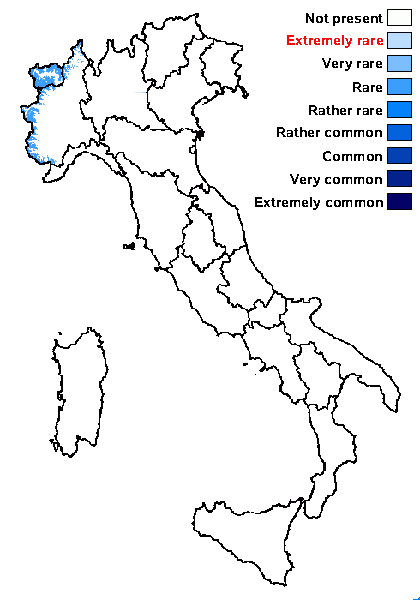
Predictive model
Herbarium samples
Growth form: Crustose
Substrata: rocks
Photobiont: green algae other than Trentepohlia
Reproductive strategy: mainly sexual
Most common in areas with a humid-warm climate (e.g. most of Tyrrenian Italy)
Commonnes-rarity: (info)
Alpine belt: rare
Subalpine belt: very rare
Oromediterranean belt: absent
Montane belt: absent
Submediterranean belt: absent
Padanian area: absent
Humid submediterranean belt: absent
Humid mediterranean belt: absent
Dry mediterranean belt: absent

Predictive model
| Herbarium samples |
 Index Fungorum
Index Fungorum
 GBIF
GBIF
